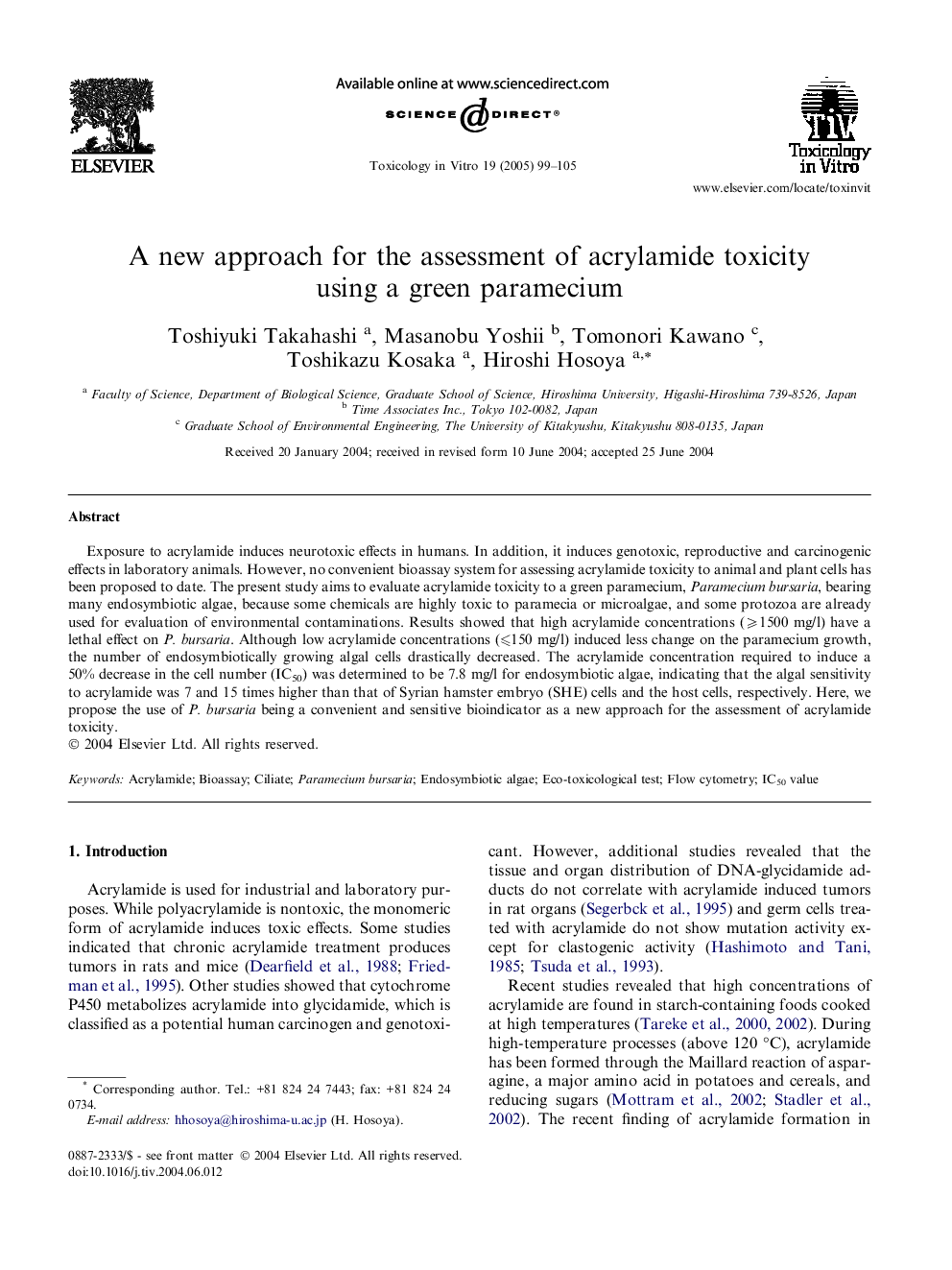| Article ID | Journal | Published Year | Pages | File Type |
|---|---|---|---|---|
| 9038344 | Toxicology in Vitro | 2005 | 7 Pages |
Abstract
Exposure to acrylamide induces neurotoxic effects in humans. In addition, it induces genotoxic, reproductive and carcinogenic effects in laboratory animals. However, no convenient bioassay system for assessing acrylamide toxicity to animal and plant cells has been proposed to date. The present study aims to evaluate acrylamide toxicity to a green paramecium, Paramecium bursaria, bearing many endosymbiotic algae, because some chemicals are highly toxic to paramecia or microalgae, and some protozoa are already used for evaluation of environmental contaminations. Results showed that high acrylamide concentrations (⩾1500 mg/l) have a lethal effect on P. bursaria. Although low acrylamide concentrations (⩽150 mg/l) induced less change on the paramecium growth, the number of endosymbiotically growing algal cells drastically decreased. The acrylamide concentration required to induce a 50% decrease in the cell number (IC50) was determined to be 7.8 mg/l for endosymbiotic algae, indicating that the algal sensitivity to acrylamide was 7 and 15 times higher than that of Syrian hamster embryo (SHE) cells and the host cells, respectively. Here, we propose the use of P. bursaria being a convenient and sensitive bioindicator as a new approach for the assessment of acrylamide toxicity.
Related Topics
Life Sciences
Environmental Science
Health, Toxicology and Mutagenesis
Authors
Toshiyuki Takahashi, Masanobu Yoshii, Tomonori Kawano, Toshikazu Kosaka, Hiroshi Hosoya,
